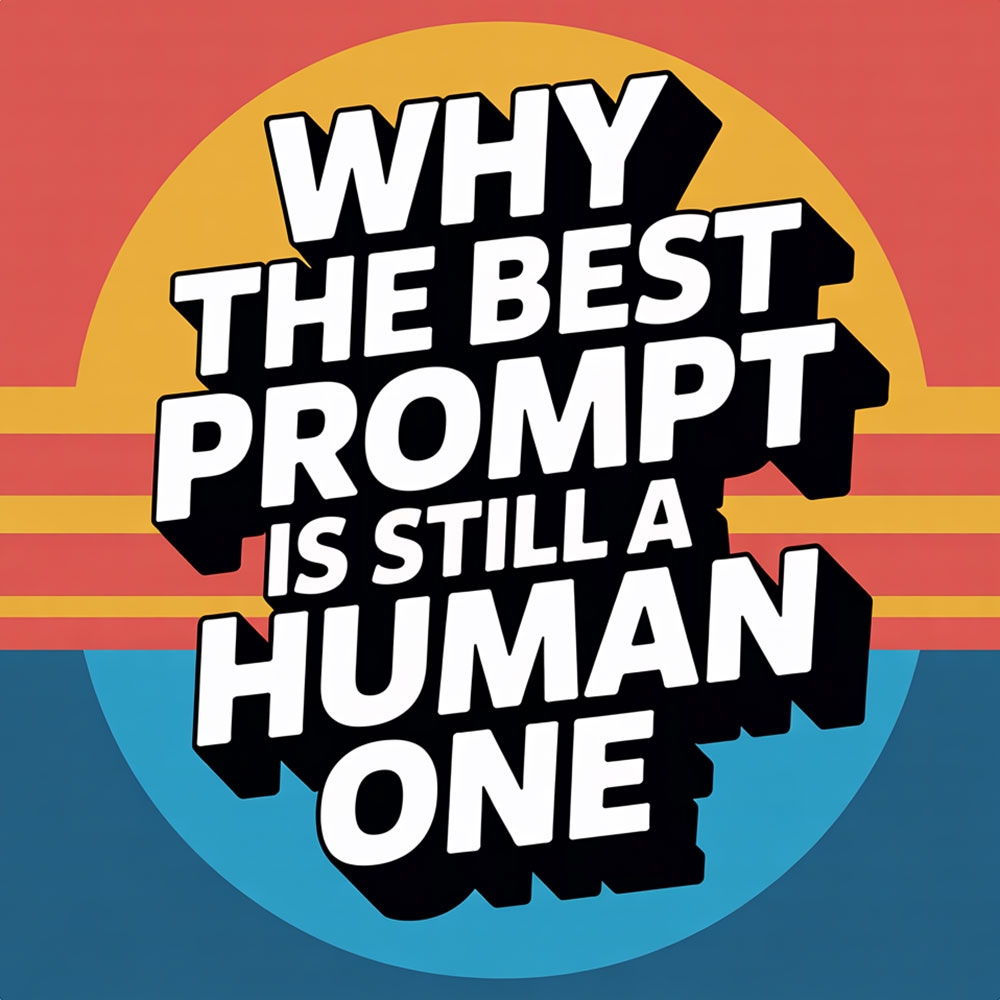Why the Best Prompt Is Still a Human One: The Missing Ingredient in AI Creativity

Why the Best Prompt Is Still a Human One
There’s a brilliant piece in AdNews by Eaon Pritchard titled “The Only Prompt That Matters”, and it gets right to the heart of the AI and creativity debate. His argument? The magic doesn’t lie in the tool – it lies in the human using it. And honestly, I couldn’t agree more.
We’re living in a time when you can throw a few words into ChatGPT or Midjourney and get something half-decent back. Type in “Ghibli-style cat riding a bicycle through Tokyo at sunset” and boom – you’ve got a visual masterpiece in seconds. Impressive, no doubt. But is it actually creative? That’s where things get fuzzy.
The Human Element Behind the Prompt
Pritchard references Joe Strummer’s famous line: “No input, no output.” That sums it up perfectly. If you’re not curious, not observing, not deeply connected to your own thoughts, emotions, and culture, then your prompts will always be surface-level. AI reflects what you give it – and if you feed it empty calories, you’ll get processed junk in return.
The Professional Difference
He also mentions a study comparing AI-generated art prompted by professional artists versus novices. Unsurprisingly, the pros produced far more original and engaging results. Not because they used fancier words, but because their understanding of art, emotion, and nuance shaped their prompts. The AI didn’t make them more creative – they simply used it as a tool to express their creativity more effectively. And that’s the key. AI isn’t the answer. It’s not even the question. It’s a paintbrush, a keyboard, a camera. What you do with it is entirely down to you.
The Cost of Content Without Connection
We risk forgetting that. In the rush to be “efficient” and automate everything, many are mistaking output for insight. Pumping out 50 pieces of content a week might look great on a report, but if none of it moves people, what’s the point?
We’re already seeing it – marketing campaigns that feel oddly generic despite their technical polish. Corporate blogs that hit all the right notes but still lack a real voice. One agency director admitted their output had tripled using AI tools, yet engagement had dropped. “We’re saying more,” she noted, “but resonating less.”
The irony? As AI content becomes more widespread, truly human-crafted work becomes more valuable – not less. Your unique lived experience can’t be replicated by AI. But it can help you express it more efficiently.
Cultivating Your Creative Core
So how do we keep that human edge in the AI age? Try these ways to strengthen your inner “prompt engine”:
- Consume widely and deeply – Read outside your bubble, experience diverse art, engage with different cultures. Rich inputs lead to richer outputs.
- Practise mindful observation – Notice details in your environment, conversations, and emotions. These fuel more layered creative work.
- Embrace analogue experiences – Step away from screens now and then. Real-world sensory experiences feed your imagination in ways digital ones can’t.
- Collaborate across difference – The same prompt can yield totally different results depending on who writes it. Diversity of experience = diversity of expression.
Finding the Balance
There’s also a sweet spot where AI can surprise us. Sometimes, it makes connections we wouldn’t have thought of – but recognising which are worth pursuing still takes human judgement and instinct. AI might open a door, but it’s still you who decides whether to walk through it.
This is especially true across cultural contexts. A prompt from Tokyo won’t echo one from New York or Lagos – each brings its own aesthetic, priorities, and lived perspective. That diversity is vital, even as we embrace AI.
The Creative Future We Choose
The best prompts – the ones that spark truly great work – still come from people with something real to say. People who’ve lived, failed, observed, reflected. You can’t shortcut that with an algorithm.
So yes, use the tools. Experiment. Embrace AI. But never forget: you are the engine. And the only prompt that really matters is the one that comes from your unique, human perspective.
Ask yourself: What distinct human insight are you bringing to your creative process? Are you using AI to enhance your voice – or dilute it?
In this new creative era, the most powerful work won’t come from those who use AI most efficiently. It’ll come from those who infuse it most authentically with their humanity.
Creativity was never about the tools. It was always about the person holding them.